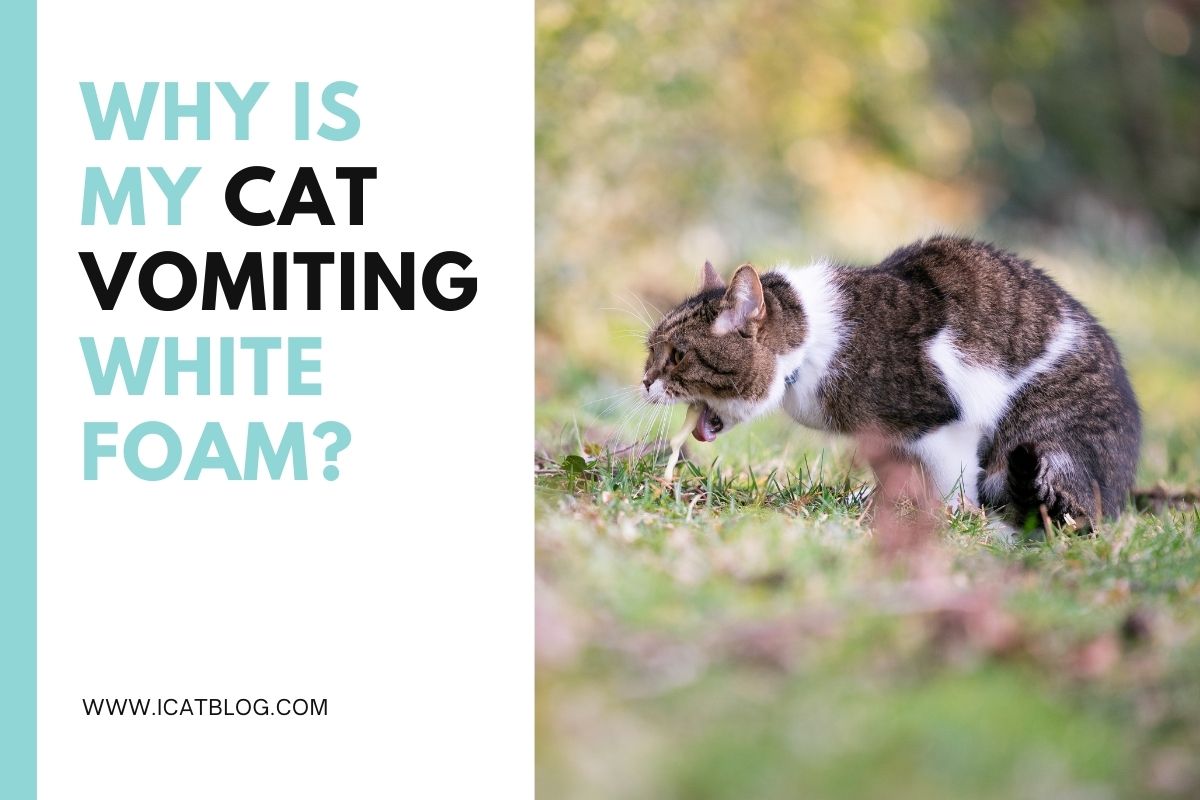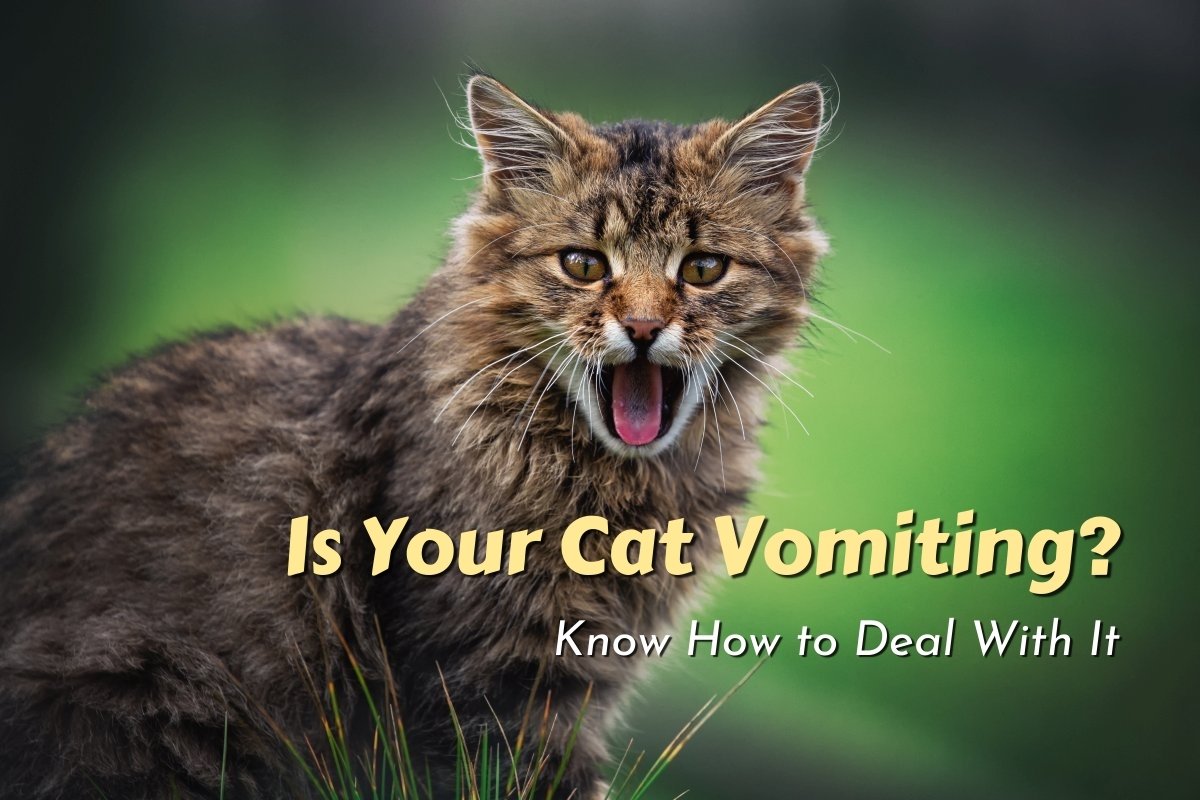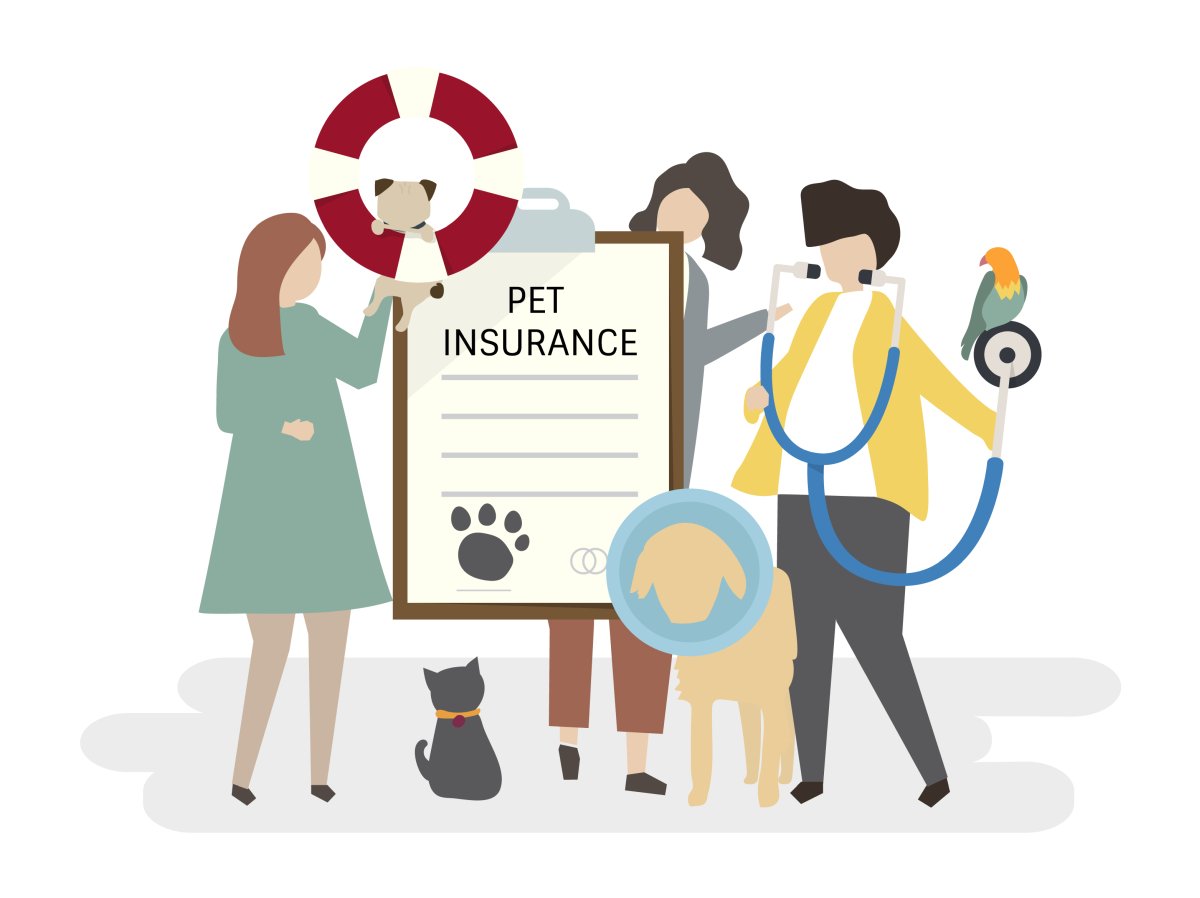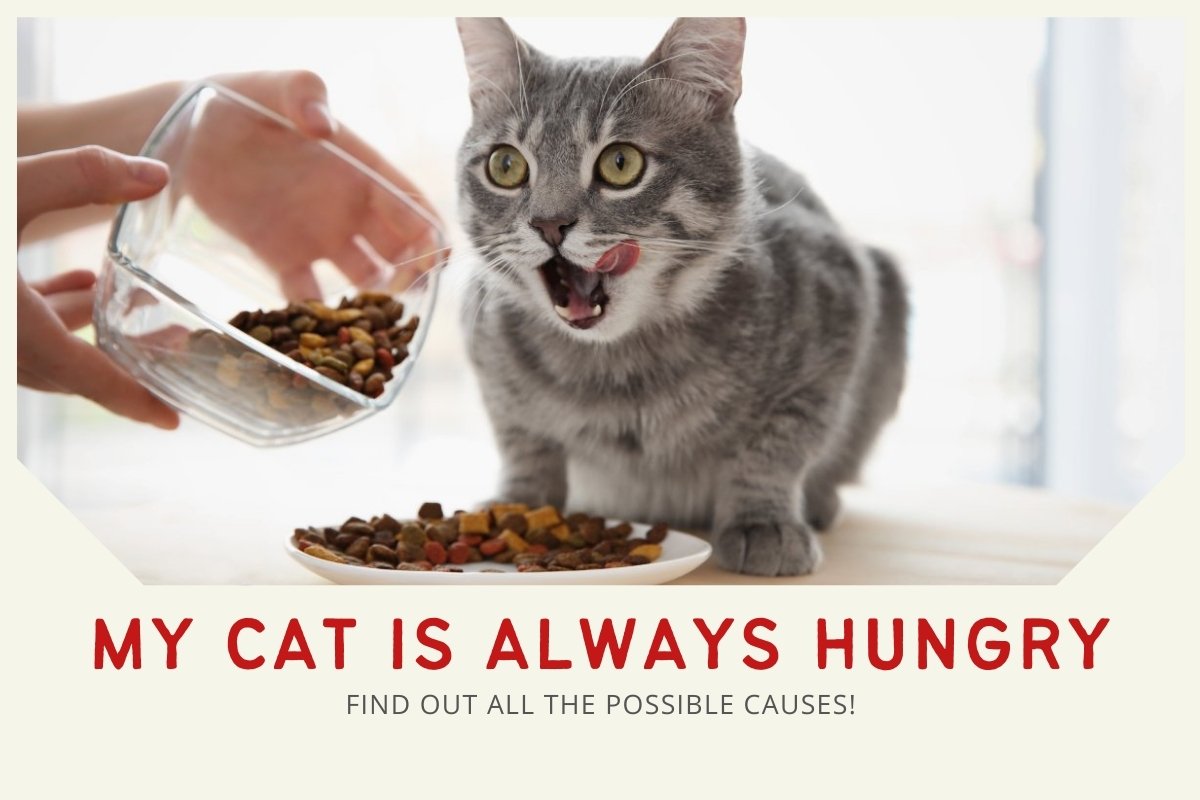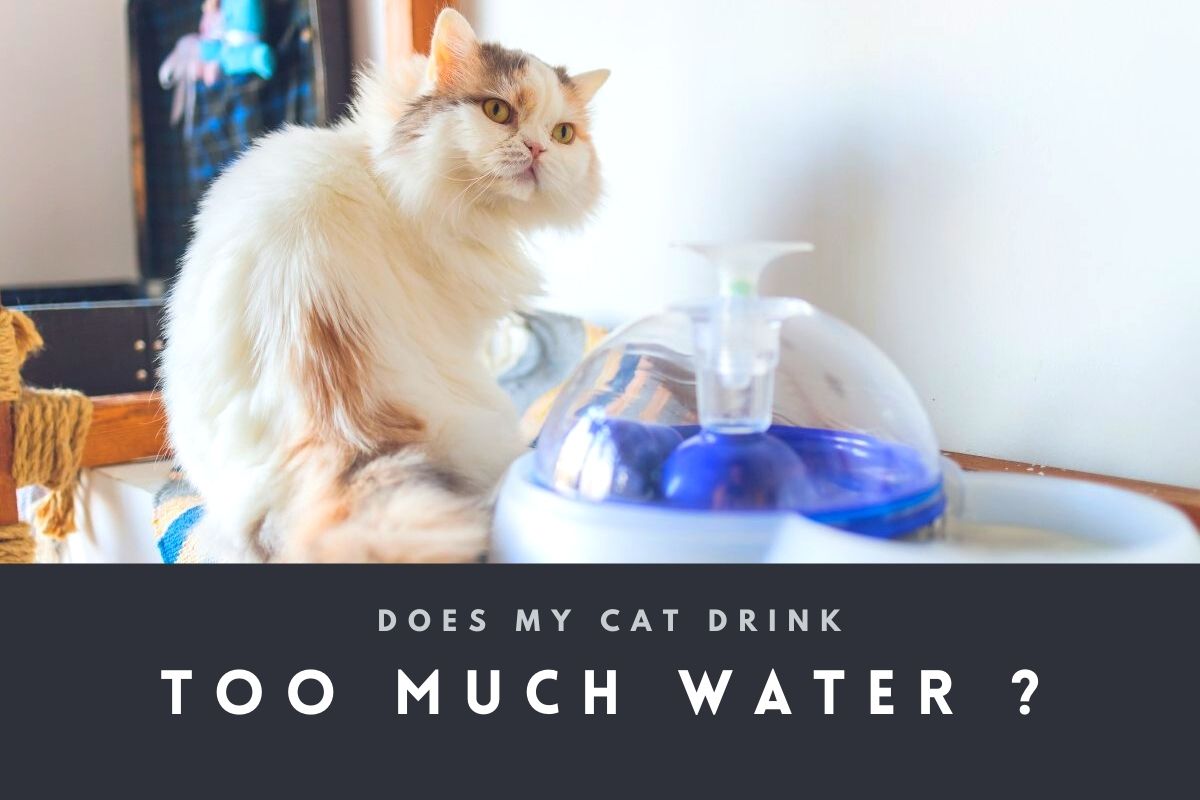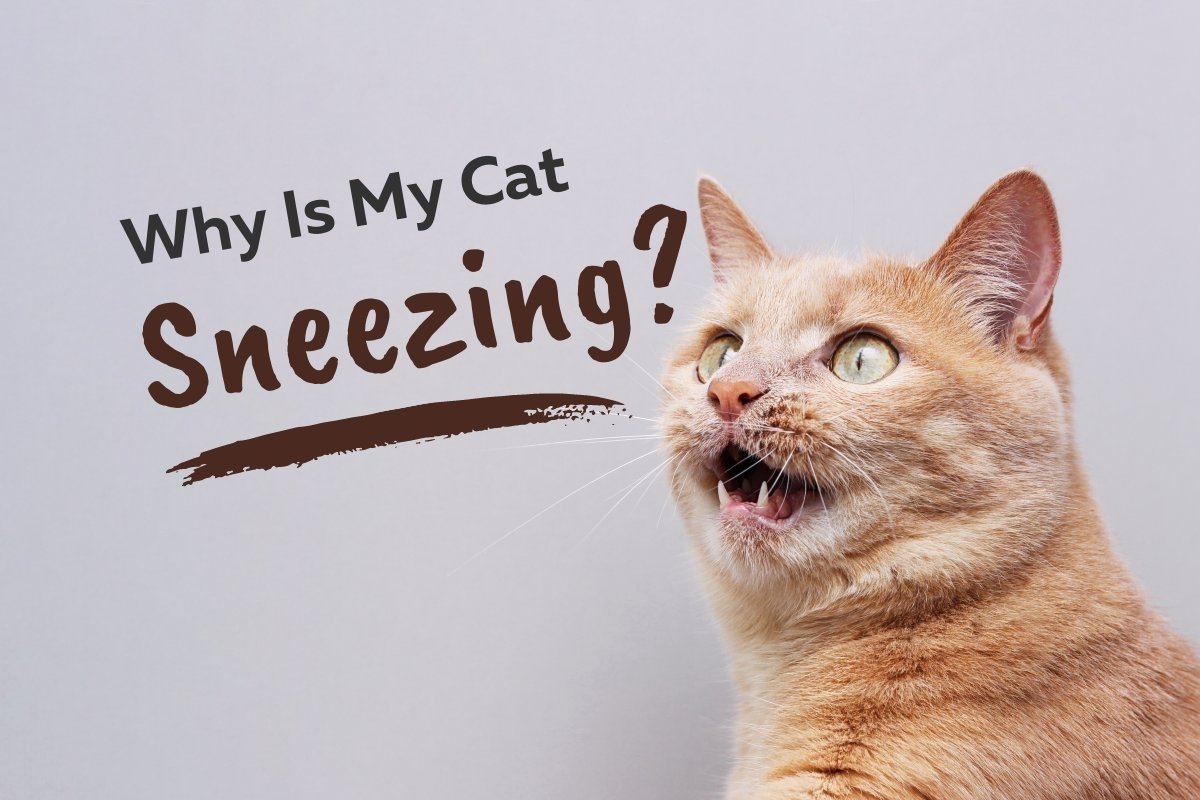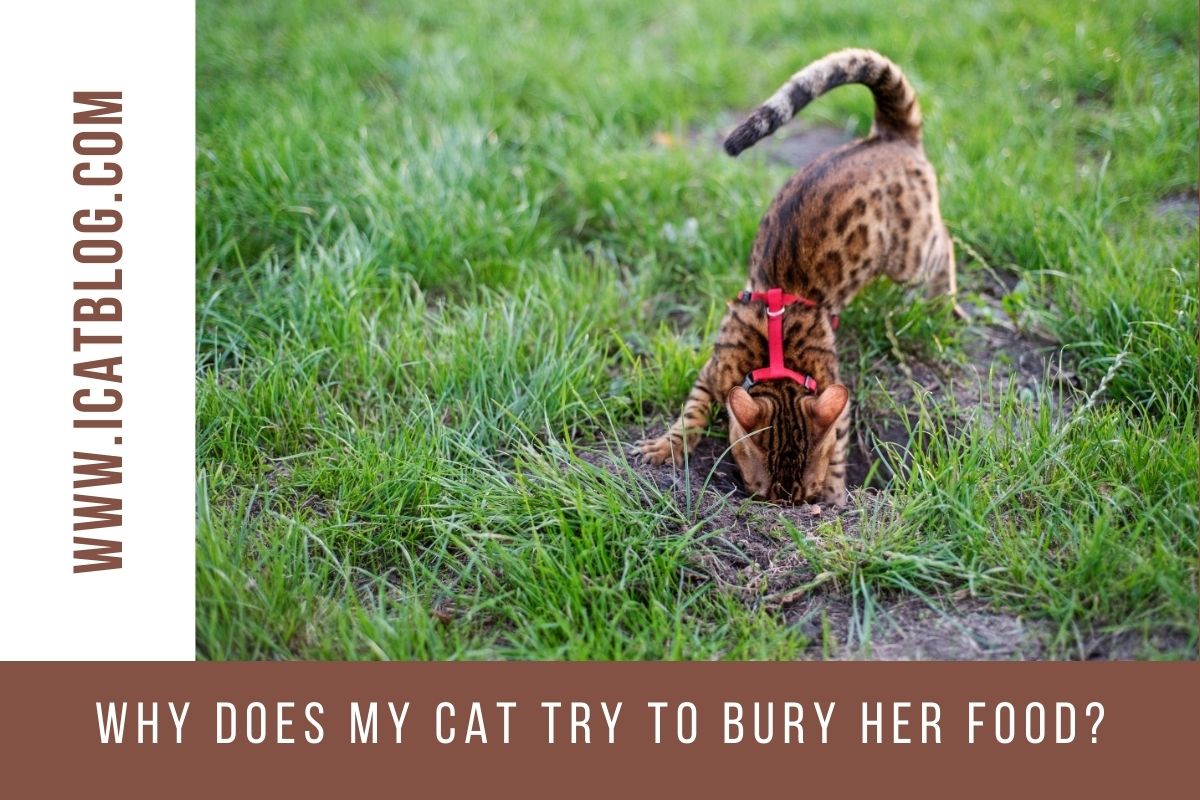Your feline friend vomiting up white foam could signify various diseases or ailments. In general, there are different underlying reasons for cats vomiting.
If your cat is repeatedly vomiting, a veterinarian visit is a must for an inspection and diagnostic testing to discover what is wrong. So your cat will receive the necessary treatment immediately, regardless of the appearance of the vomit.
Causes of Cat Vomiting Foam
Cats typically vomit white foam, which is usually not life-threatening. It’s fair that as a pet owner, you’d be concerned if you saw your cat puking and suspected something was wrong with it.
With that in view, here is a list of potential causes for your cat vomiting white foam. Before taking your pet to the clinic, it’s good to look into these possible explanations, as your cat might not be in danger.
Indigestion
Cats’ stomachs create numerous gastric juices and hydrochloric acid to digest their food, just like us. However, if a cat skips a meal or is not served on time, the buildup of liquid and acid might cause your cat to vomit.
In addition to white foam, cats suffering from indigestion may vomit yellow foam. If your cat’s vomiting is caused by indigestion, your vet may recommend eating quick, frequent meals at the same time every day to relieve any stomach acid accumulation.
Hairballs
Hairballs are a typical cause of clear foamy vomit. When your cat gets a hairball and vomits clear liquid, its body tries to get the hairball out of its stomach. Some stomach liquids may be produced before the appearance of the hairball.
The best strategy to cure hairballs is to groom your cat regularly to remove superfluous fur and boost their fiber intake. If you find your cat vomiting clear liquid without creating hairballs, the cause is likely something else, and a doctor visit is a must.
Hyperthyroidism
Older cats are especially vulnerable to an overactive thyroid. Commonly, the condition causes vomiting and weight loss in cats. Cats suffering from the condition frequently eat a lot, drink a lot of water, have diarrhea, and yowling.
If your cat is infected with the disease, you should take her to the vet for a blood test. This will aid in determining thyroid hormone levels. The cat will be given medication daily to assist in lessening the symptoms of the sickness.
Kidney Disease
If your cat is vomiting, a frothy white substance, it might be an early indicator of renal failure. Additional signs to look out for include an increased need for water and difficulty while peeing. If you doubt that your pet has kidney problems, you should seek immediate veterinary attention.
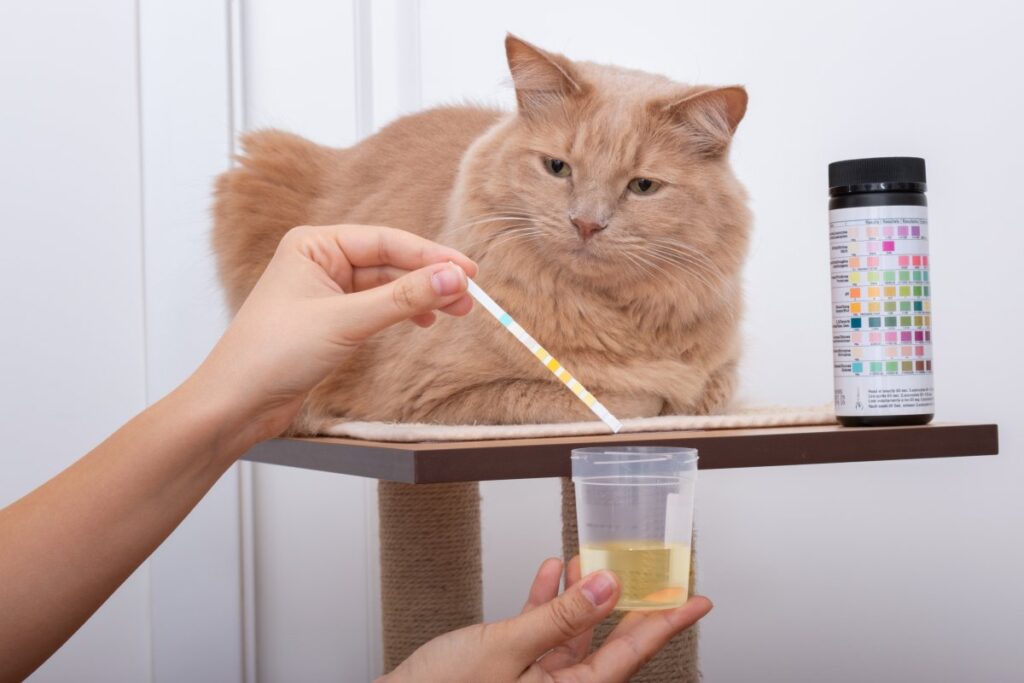
Diagnosing Vomiting in Cats
A vomiting cat should be taken to the vet to determine the reason for the vomiting. The veterinarian will begin by taking a detailed history and completing a physical examination.
Other procedures include:
- Fecal parasite tests
- Blood work to screen for metabolic illness
- Other abnormalities related to vomiting
- Imaging
If the cause of the vomiting cannot be identified, more advanced diagnostic testing, such as biopsies, endoscopy, or abdominal surgery, would be conducted.
Steps to Take When Cat Vomiting White Foam
Your reaction to a cat puking white foam may differ depending on other things. Below are some things you can take to ensure your cat is well cared for.
❖ Keep an Eye On Your Cat
If this is a one-time incident and your cat isn’t exhibiting any other symptoms, keep an eye out for more. Please consider what they ate when it occurred and anything else out of the ordinary about the event.
❖ Restrict their Food
- If your pet has been vomiting white foam more than once, make them fast for some hours to see if it helps eliminate the dyspepsia. You can offer them small quantities of water, but don’t let them binge on it because this will result in more vomiting.
- Make a note of any irregularities.
- Visit your veterinarian if your cat begins to exhibit any additional symptoms, such as diarrhea, gastrointestinal pain, dehydration, or you cannot stop the vomiting.
❖ Feed Your Cat Plain Food For a Couple of Days
Indigestion can sometimes be relieved by feeding a plain diet for several days. To help lower stomach acid, feed your cat smaller portions every few hours. Visit your vet if your pet exhibits any other symptoms or continues to vomit white foam after 48 hours.
❖ Contact Your Veterinarian
If your cat vomits white foam repeatedly and does not react to at-home treatments, or if they have diarrhea, fever, or abdominal pain, seek help from a veterinarian.
Severe abdominal pain, uncontrollable retching, high fevers, or dehydration necessitate an urgent visit to your veterinarian and should not be handled at home.
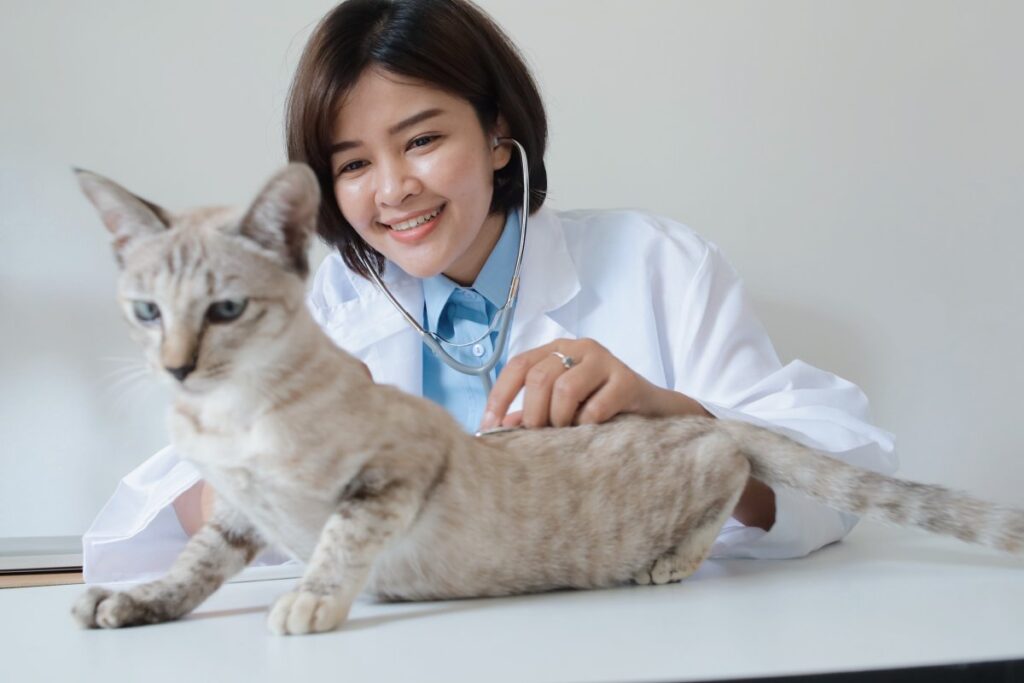
When to Visit the Vet?
Here are a few guidelines to assist you in deciding whether or not to take your cat to the vet:
- If the cat refuses to eat, this indicates that something is wrong. If a cat goes more than a day without eating, it may develop a dangerous illness known as fatty liver.
- If the cat vomits many times throughout the day
- Vomiting in conjunction with a significant increase in thirst can indicate renal toxicity. If you are concerned about this, it is recommended that you see a veterinarian straight away.
- If a cat, particularly a male cat, vomits and has difficulty peeing, this could indicate a significant urinary tract obstruction. This is an emergency scenario that necessitates prompt veterinarian attention.
- If you suspect something is amiss, it’s time to visit the veterinarian.
What Would be the Treatment Plan for Cat Vomiting?
Depending on the diagnostic result, treatment options may entail an overnight stay to provide fluids or medications.
If the problem is more significant, such as an obstruction, surgery may be recommended to eliminate the blockage. Suppose your cat is diagnosed with an illness. In that case, a health plan will be developed in collaboration with you and your vet to get your feline companion back to being healthy and happy.
The Takeaway
Aside from careful monitoring, weigh your cat regularly and modify the feeding amount appropriately after moving to a premium diet. Tummy issues of your pet can forever go away with the assistance of your veterinarian and a little effort on your part.

